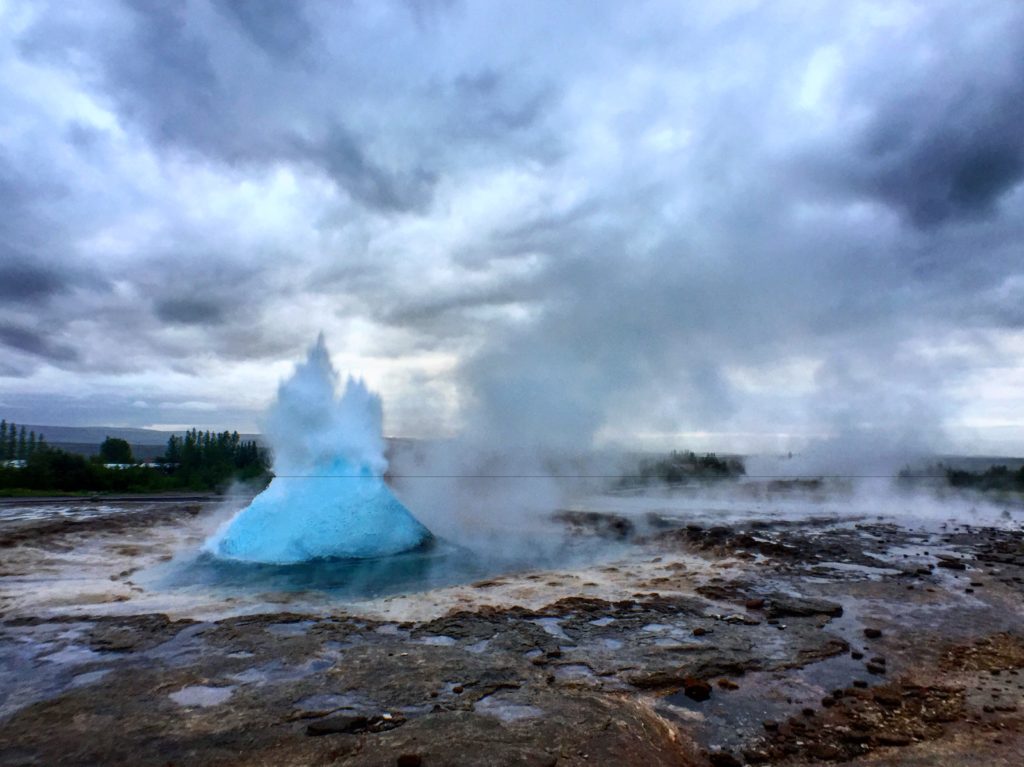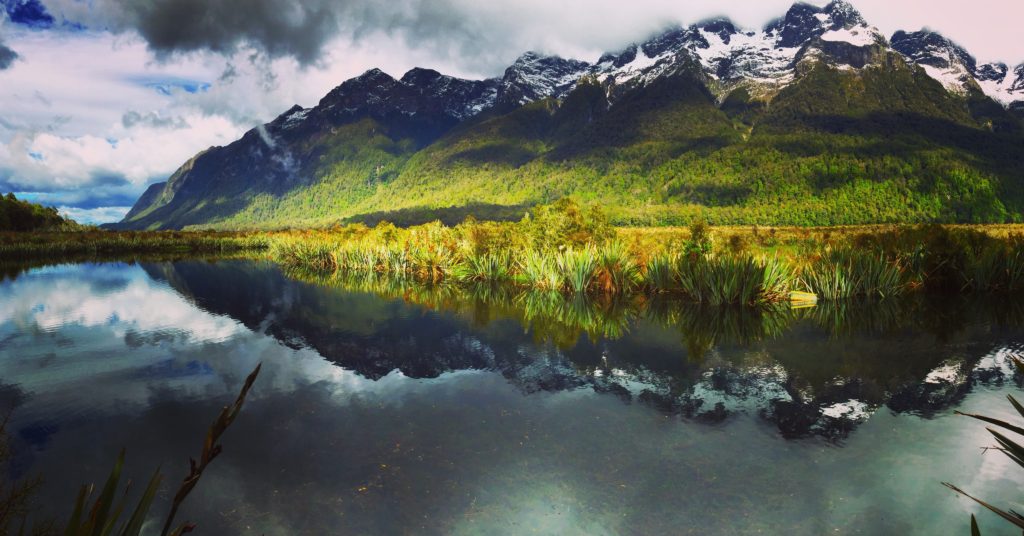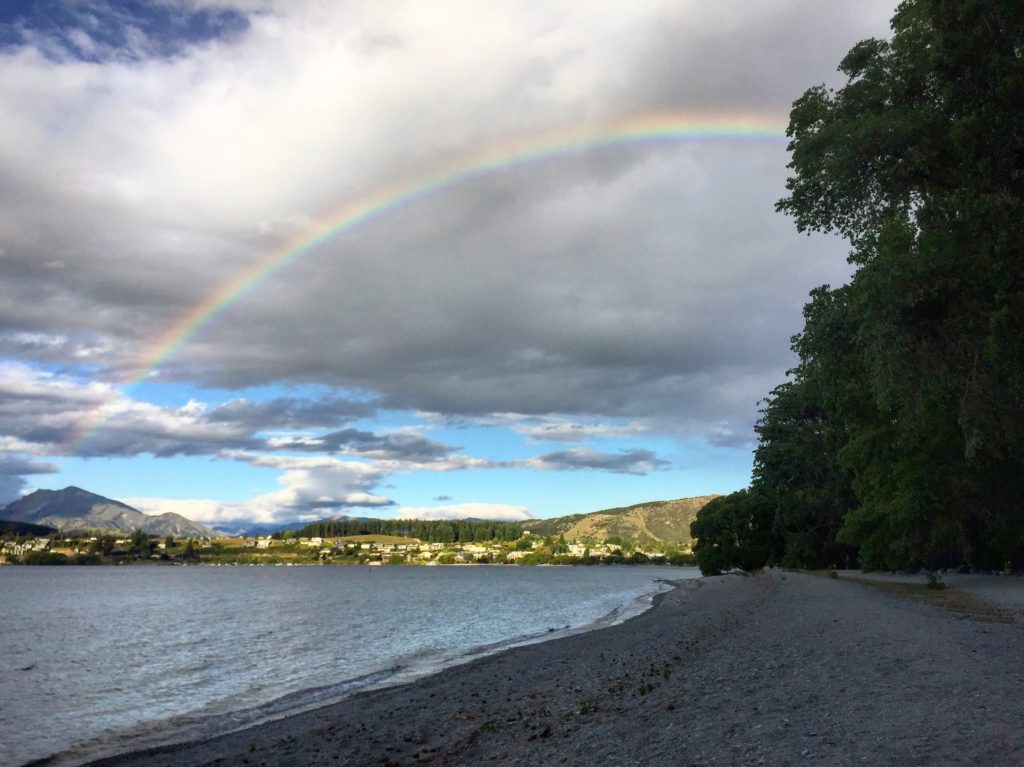South Africa is fantastic. It’s a perfect road trip destination, great for wildlife, full of outdoor adventure and bursting with natural beauty. For an up-close look at the best of South Africa, sign up for a multi-day hike on Kruger National Park’s Wolhuter Wilderness Trail.
My right hand was caked in dried blood, the cuff of my linen shirt soaked crimson.
Jobe was rightly concerned; lions, hyenas and wild dogs have a natural attraction for all things bloody and we were in their territory. He and Moses each carried impressive rifles with 10-bullet holsters just in case, though we were all more keen on experiencing and appreciating the wildlife as opposed to shooting it.
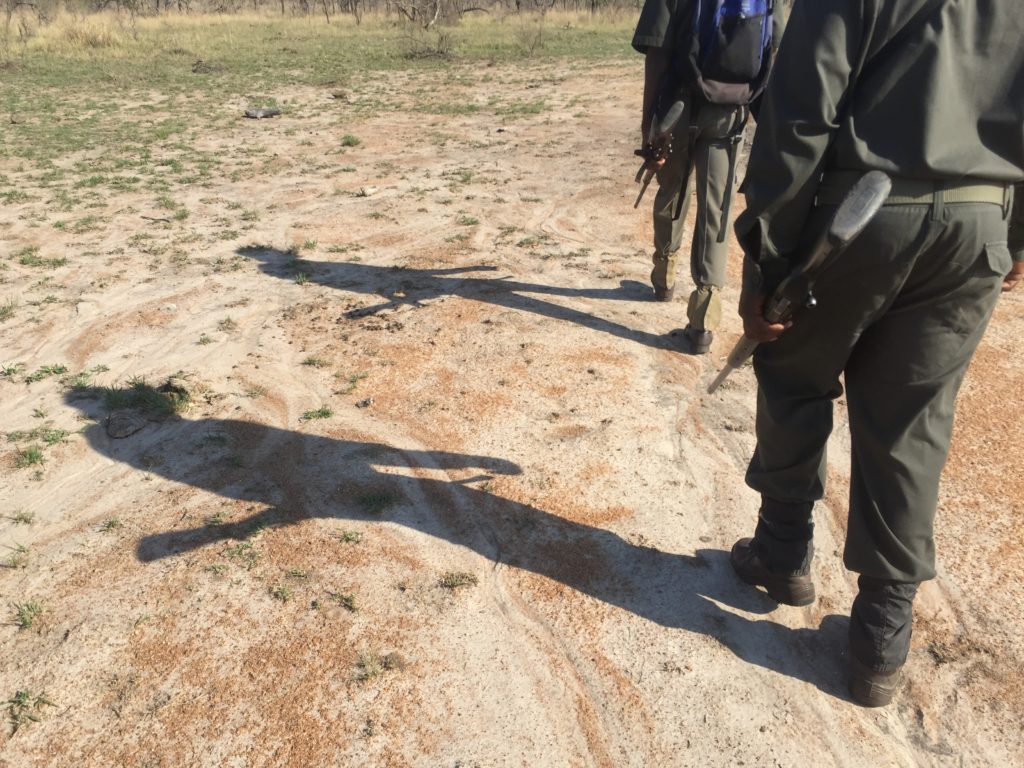
Jobe quickly identified a low-growing plant, pulled off some of its greens and placed them in my cupped hands. He drizzled water from a flask and told me to rub away.
Soon enough my hands were covered in suds the consistency of laundry detergent. Within thirty seconds I was perfectly clean.
I folded my bloody cuff over and carried on — the 3-night, 25-mile Wolhuter Wilderness Trail was in high gear.
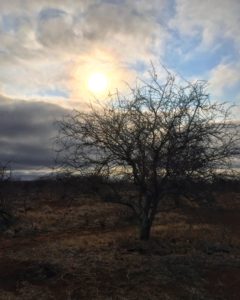
KRUGER NATIONAL PARK
Kruger National Park is South Africa’s largest, oldest and most popular wildlife spotting venue. To visit Kruger without sighting elephant, rhino, hippo and lion, well, let’s just say you’d have to be extremely unlucky.
Kruger is massive — 19,485 square km, similar in size to Wales, slightly smaller than New Jersey. Kruger snugs up against the Mozambique border, an easy three-hour drive from Johannesburg.
That relative accessibility means plenty of visitors vying for a good look at Africa’s coolest wildlife.
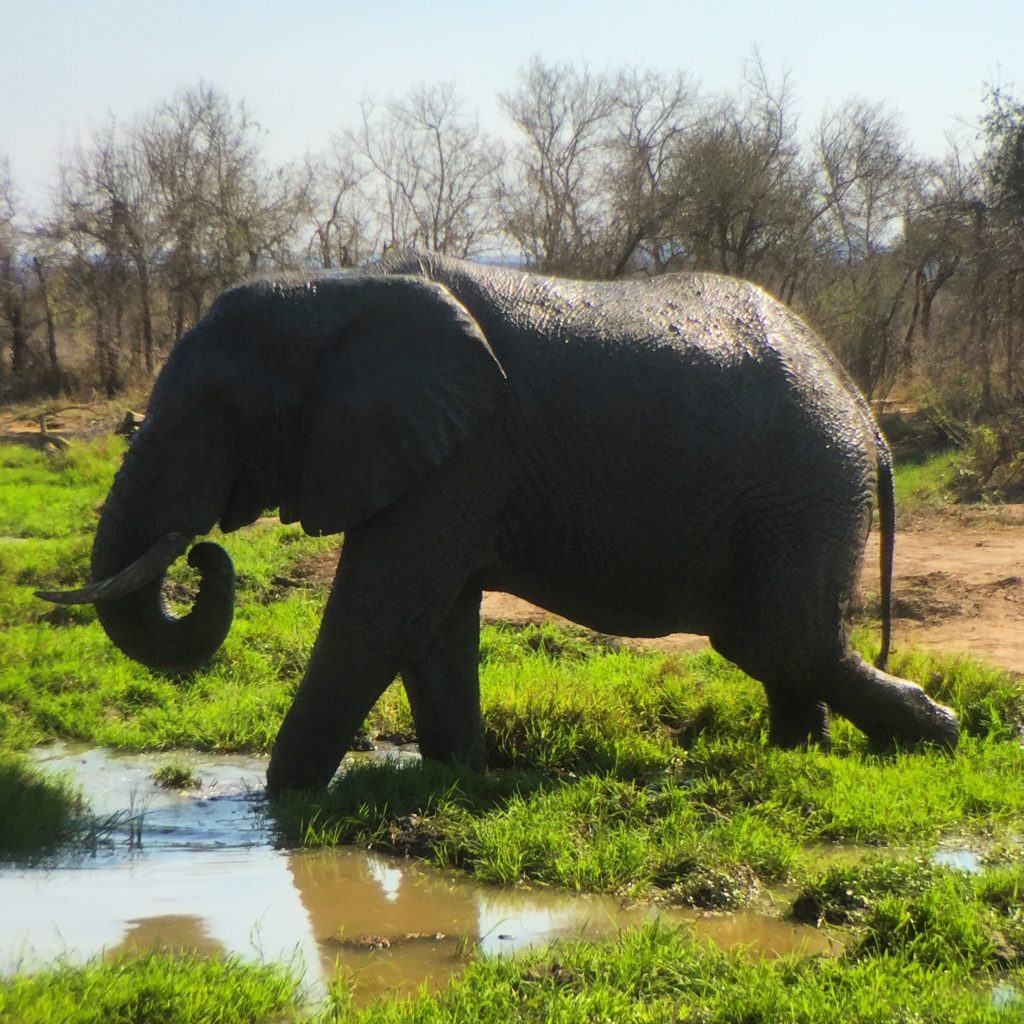
It’s easy enough to pick up a rental car and simply drive around the park’s paved roads, overnighting at one of Kruger’s twelve main rest camps. Most have dining facilities, small shops and offer a variety of activities; game drives, short bush walks, mountain biking.
But the crown jewels of Kruger’s activity list are the seven wilderness trails.
Mornings at Wolhuter
Days started with 5am wake up calls, though the sun’s impending rise roused me earlier. I shared a tiny open-air A-frame cabin with a former Swiss Army helicopter pilot. Mosquito nets hung from the ceiling and fold-down wooden shutters covered chicken wire windows.
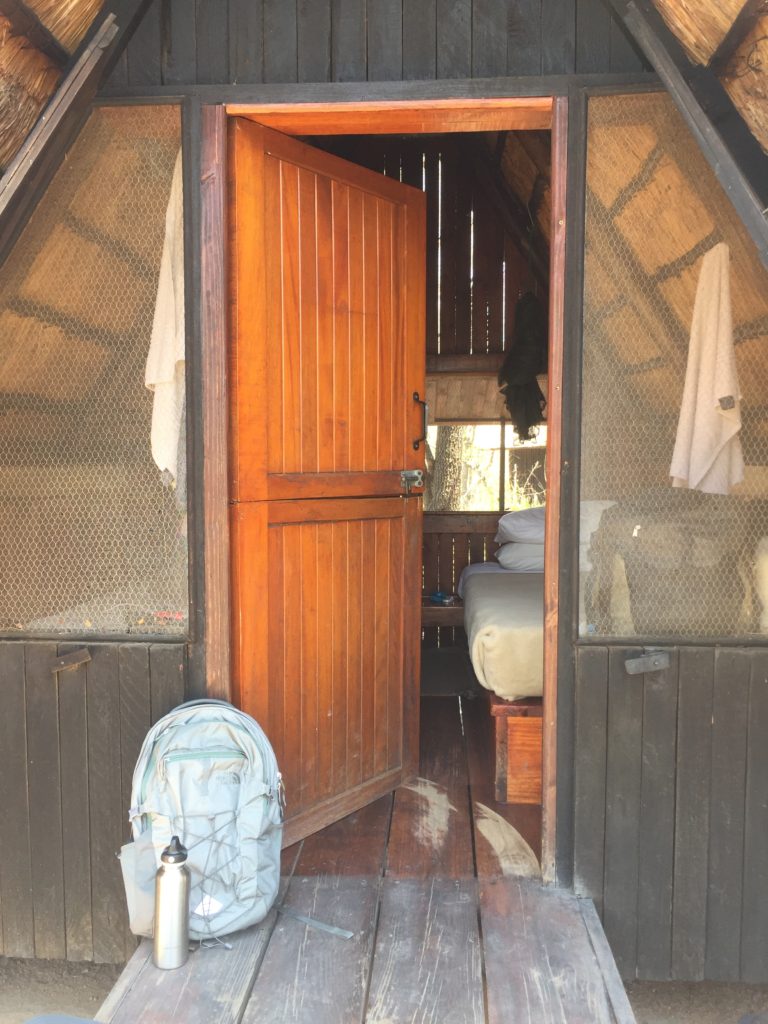
Godot was of my mind and agreed when I suggested opening our shutters in order to soak in the full nature experience. Wind whipped through our cabin one night as a storm blew through, but the combination of outdoor activity and fresh air ensured some of my best sleep in a long time.
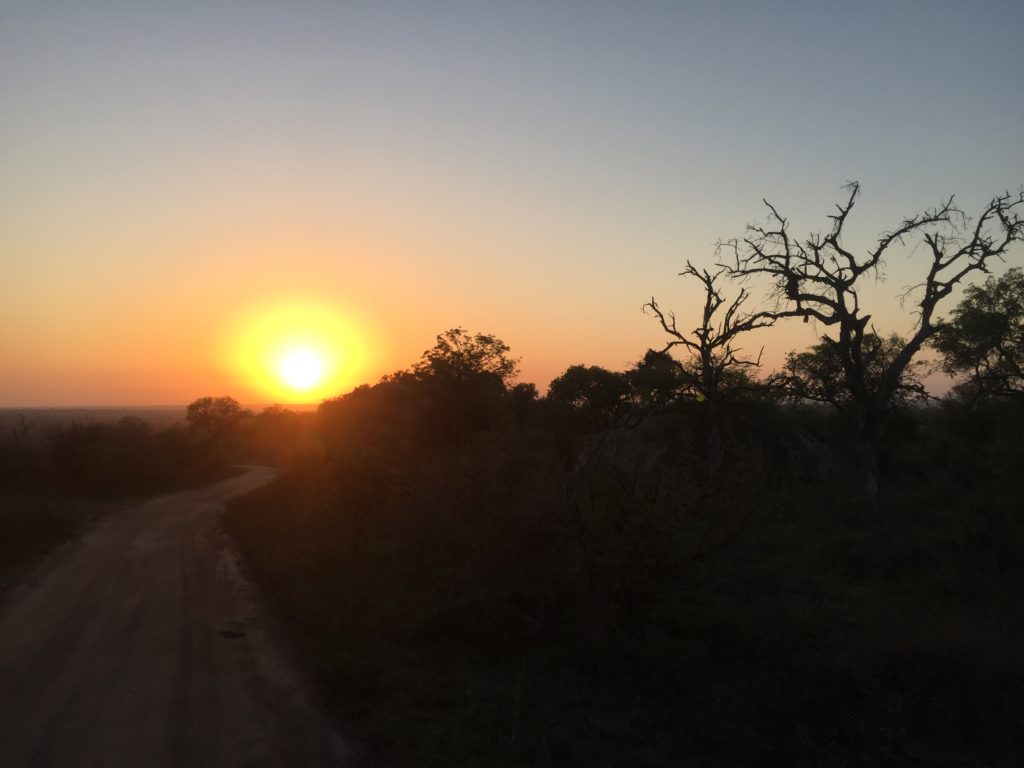
I stood on the steps of the cabin one morning looking out at the water hole. It was 5:15am. An impala — “the McDonald’s of Africa” — sped across my field of vision from right to left. Three wild dogs quickly followed suit. An hour later we witnessed the aftermath firsthand — the impala’s rump lay in the dirt, its limbs torn off and devoured, fresh blood splattered everywhere.

Four hours and seven miles after that find our group stood atop a rocky outcropping as a 4,000-pound rhino quietly munched grass and worked his way ever closer, totally oblivious to our presence.
Great nose, terrible eyes, those rhino.
Moses motioned for us to be still and remain quiet, the latter point an absolute requirement during our strictly single file walks. My heartbeat quickened as the rhino came within twenty feet before the wind turned direction and gave us away. The big guy’s massive head bolted up from the ground and scanned the area before he thundered off into the trees, a giant dust cloud in his wake.
Catch up on a delicious, authentic dinner at Mzansi in Cape Town
Afternoons at Wolhuter
By 11am we were back at camp for a well-deserved rest. Our first day out coincided with a brief heat wave and mid-October temperatures approached 100F. At that moment I would have paid a princely sum to be doused by a bucket of ice-cold New Zealand glacial run-off.
Beyond camp there was very little shade to be found and I was exhausted. I took a refreshing gas-fired shower and sat down to a hearty lunch.
Each bush camp is manned by a dedicated caretaker who whipped up meals and tended to camp while we were out and about.
Vegetable stew accompanied by traditional South African pap? Sliced peaches and custard for dessert? Eggs with homemade bread and a spot of tea?
Yes, yes, and yes. Please.
After some downtime (translation — a couple of hours of deep, refreshing, absolutely necessary sleep) we were back at it, hopping in the open-air safari truck for a drive to a sunset-worthy location.
We walked again, this time around an earthen dam.
Several territorial hippos poked their eyes above the waterline to investigate the intruders. A dozen crocodiles enjoyed the final rays of afternoon sunshine. A giraffe with a rather nasty gash on its head noshed vegetation from up on high.
This was the Africa of my dreams.
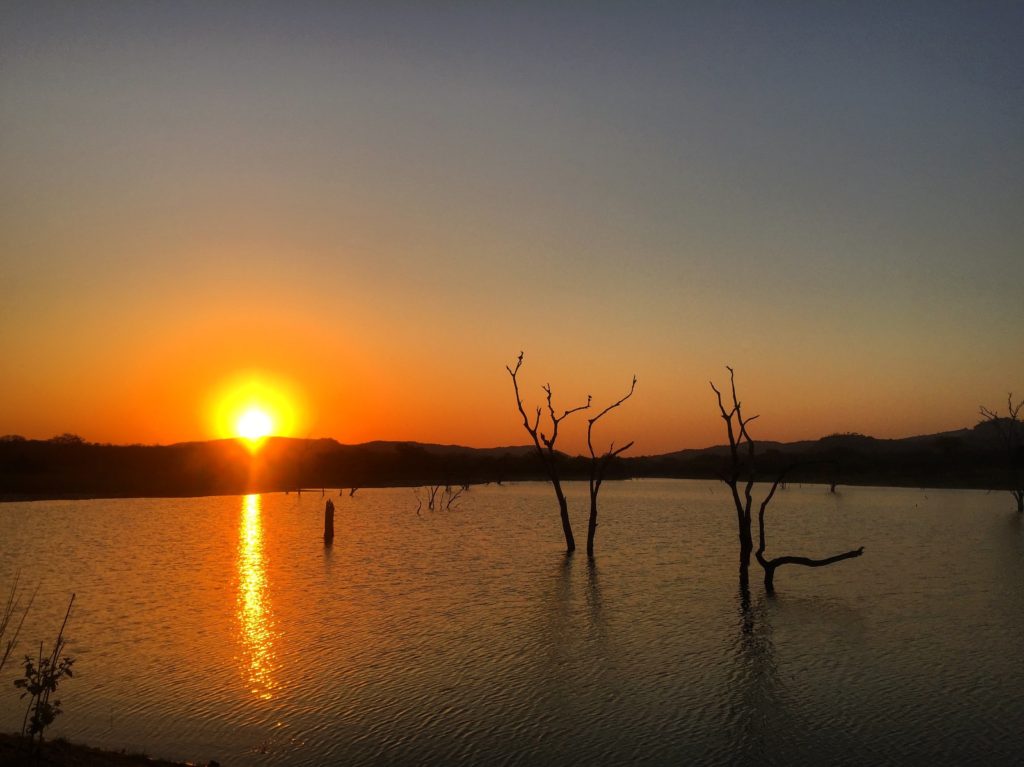
In addition to being excellent guides, the guys were expert educators.
Jobe identified every single bird call over the course of four days. Moses explained why all dark-skinned animals have horns, but only the males of light-skinned animals do. And why are zebras black AND white? For the same reason black humans have wider noses than white ones — cooling the body and temperature regulation.
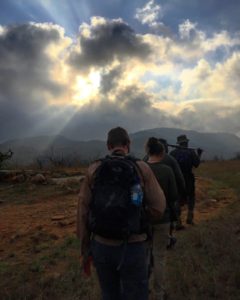
Evenings at Wolhuter
Over dinner we talked of rhino poaching and the effectiveness of neighboring Botswana’s shoot-on-sight policy for national park trespassers. South Africa has no such policy, but I did see several anti-poaching units patrolling the park during my visit.
Asian demand for rhino horn has driven the recent uptick in poaching, especially in and around Kruger. To think demand for something similar to a human fingernail could drive a beautiful creature like the rhino toward extinction is heartbreaking.
Speaking of Asia and wildlife — check out my boat trip into the rainforests of Indonesia for a look at the critically endangered orangutan
Around the fire the guys told us of past encounters, about Moses’ near death experience with a rhino, about Jobe and the fourteen lions. Then there was the leopard that jumped on a previous hiker and the charging rhino from a few weeks prior. I listened intently, simultaneously fascinated and concerned.
I leaned back in my camp chair and tried to wrap my head around the crazy number of stars in the nighttime sky.
Gas fired showers and toilet shacks perched near the perimeter fence ensured a bit of adrenaline accompanied normally mundane tasks.
We laughed when Moses said the rickety waist-high chain link was more for calming our minds and keeping our group of eight in than actually protecting anyone from the dangers beyond.
If a lion wanted in, it was coming in.
Harry Wolhuter
Harry Wolhuter was one of Kruger’s first rangers. He was out on horseback making the rounds one afternoon way back in 1904 when a pair of lions knocked him from his horse. A lion took Wolhuter in its jaws and dragged him off into the bush. Harry’s life appeared to be coming to a rather unceremonious end. But the ranger struggled for his life. Miraculously he managed to retrieve his knife and fatally stab the lion.
Seriously injured, Wolhuter managed to climb a nearby tree as the second lion came in for a try. By then the ranger’s dog had raised a disturbance and Harry’s assistants arrived to help.
Long story short — Harry survived and is today immortalized with the namesake Wolhuter Wilderness Trail. For good reason! He was one bad-ass. His famous knife and the skin of the dead lion are each on display at the Skukuza Rest Camp.
So. Much. More.
There was so much more — the pack of wild dogs trying to separate a month old rhino calf from its mother (unsuccessfully); observing a herd of elephants grazing in a dry riverbed, noting how they dig holes with their feet before their trunks filtered water through the sand; facing off with a group of Cape buffalo; 15,000-year old rock paintings; all the reflecting eyes as we bounced over rutted dirt tracks in the dark; the dwarf mongooses that scurried around camp.
Wolhuter was PBS Nature, National Geographic, Animal Planet and the Travel Channel all rolled into one spectacular package.
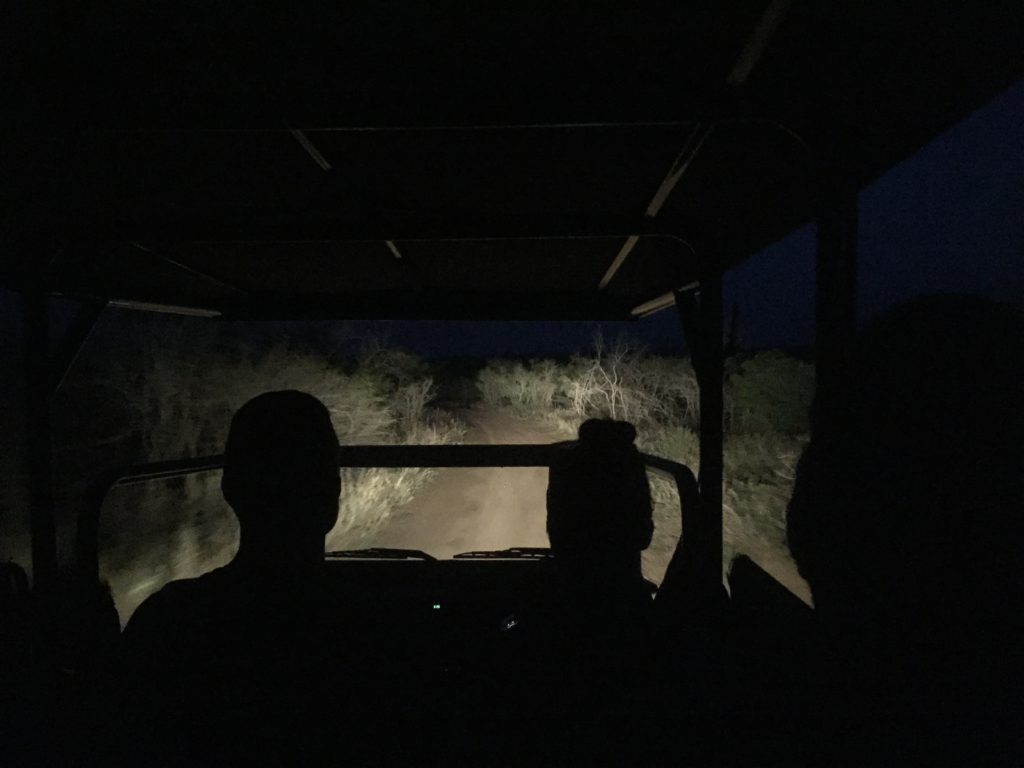
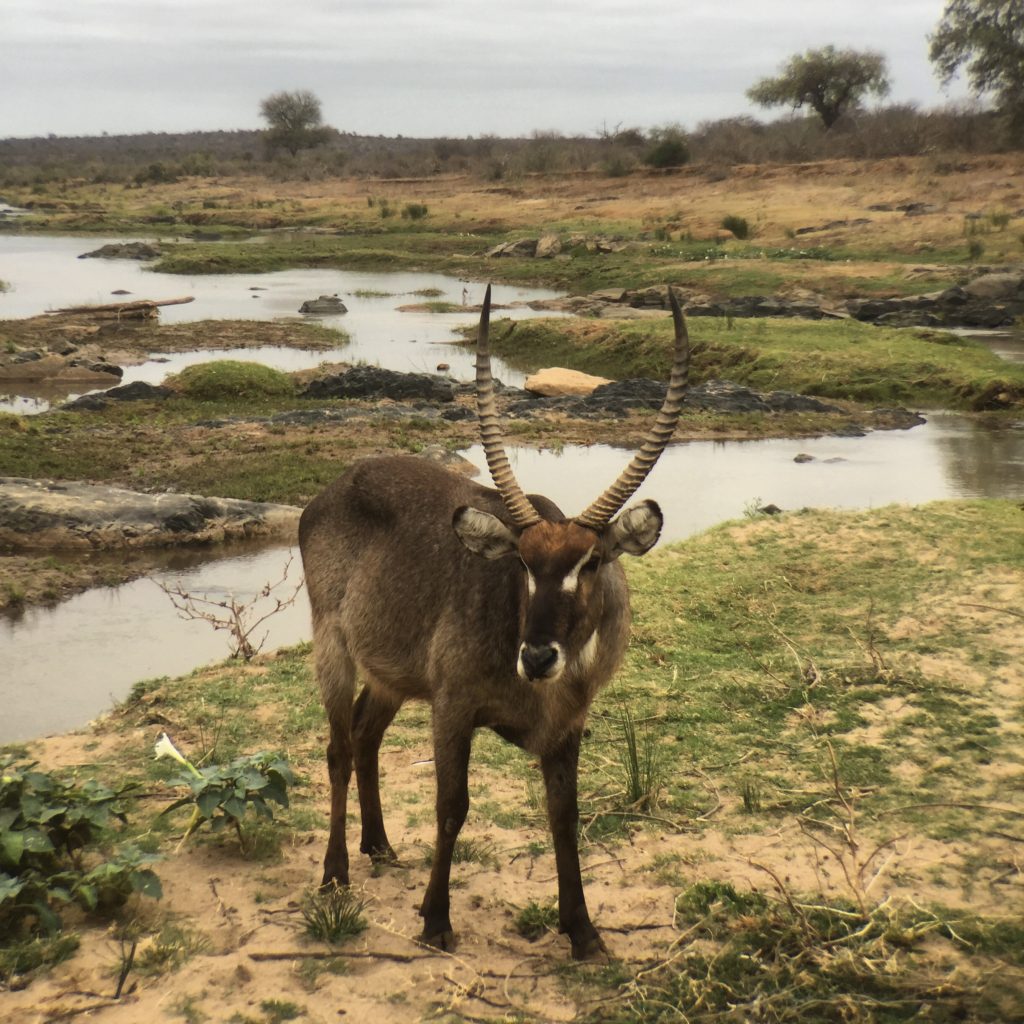
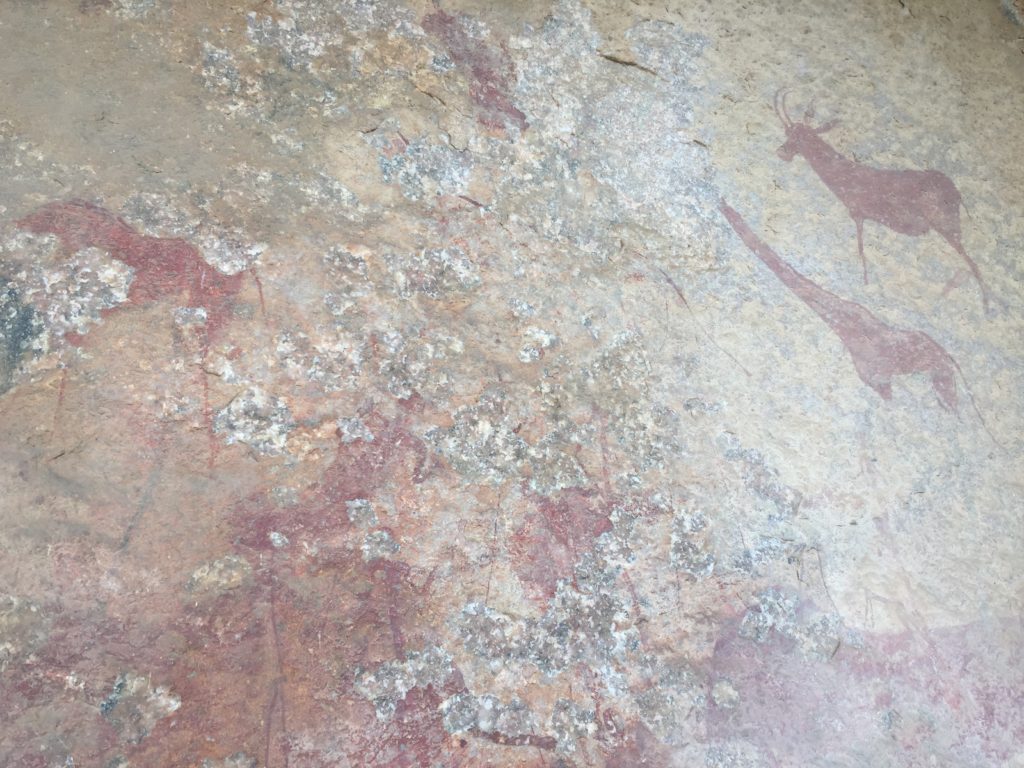
DO IT YOURSELF
The Wolhuter Wilderness Trail journey kicks off from Berg-en-Dal Rest Camp in the far southwestern corner of Kruger National Park. The actual wilderness trail camp sits about ninety minutes drive beyond Berg-en-Dal.
Getting There
Accessible airports in Hoedspruit (HDS), Nelspruit/Kruger (MQP) and Phalaborwa (PHW) make traveling to Kruger an easy exercise. There’s even a small airport inside the park at Skukuza Rest Camp (SZK). Johannesburg (JNB) and Cape Town (CPT) offer plenty of regular services. Google flights is your trusty friend.
Getting Around
Car rentals are available at every airport mentioned above. All the usual suspects offer vehicles. I usually search through Expedia, then crosscheck against rates from the rental company websites.
The SANParks site offers a nice overview of your transportation options.
Wolhuter was part of a larger road trip I took through Swaziland and Kruger itself. I rented a car in Johannesburg and drove a half loop east and north through Swaziland and the park before flying back to Jo’burg.
Sleeping
A variety of accommodation options are available within the park. The real-time availability search system is a beautiful thing. Advance bookings are essential and open in the SANParks system eleven months ahead of time. For example, on August 1st, 2021, bookings open through the end of November, 2022.
Eating
When I visited during October of 2017, SANParks was in the middle of an ugly dispute with the company that operates several of the restaurants in the park. In an ironic twist I happened to visit each of the three camps affected by this shutdown.
I laugh now, but it was much less amusing at the time.
While park staff tried to make the best of things, let’s just say dining wasn’t the highlight of my visit. The food itself wasn’t the problem — the new system was. Shuttering the actual restaurants, setting up wooden tables and chairs outside and making things up as they went with overwhelmed staff simply didn’t work. South African tourists I spoke with were equal parts annoyed and embarrassed by the situation.
Wilderness & Backpacking Trails
Kruger National Park’s seven wilderness trails depart every Wednesday and Sunday around 2:30pm, returning, respectively, on Saturday and Wednesday by 9am.
Wilderness trails are all-inclusive and you will manage just fine relying solely on the food and drinks provided. Some camps (including Wolhuter) have a communal refrigerator where guests can chill their own wine or beer. A South African couple on my trip did just this, packing in multiple cases of beer.
Backpacking trails are another option. These ranger-led trips involve self-sufficient camping with your own tent and cooking gear. Instead of sleeping in a permanent camp as I did you’ll sleep in the open, in your own tent. Carry provisions on your back.
As with accommodation, activity bookings open eleven months ahead of time and are absolutely necessary!
Each trail is known for specific topography and wildlife experiences, so a little advance research will ensure you get what you’re looking for. The Wolhuter Wilderness Trail lies in a very popular rhino habitat (but rarely lion) while others are heavy on birds or elephants.
Tips
Bring sunscreen, long pants, a head lamp and mosquito repellant. Anti-malarial medications are essential in Kruger National Park. Remember to pack light! The A-frame huts are small.
